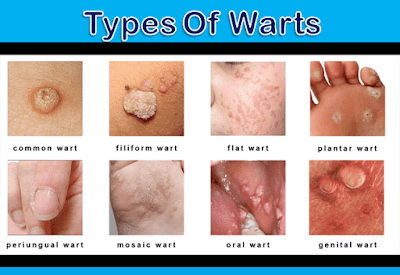PARKINSON'S DISEASE: DON'T GIVE UP
 |
| Taken from internet |
For the last few days you are observing that your
father couldn’t button his shirt, frequently forget his laptop password, and drop things from
his hands often. You asked what has happened to him, he replied that for the
last few weeks his hands are trembling with stiffness of arms and find
difficulty in holding things for long. You thought to consult a doctor; the
doctor examined and diagnosed him Parkinson’s Disease (PD). It’s heartbreaking
to know that your loved one is suffering from such a deteriorating brain
condition.
WHAT
IS PD?
Firstly let me brief you how brain works and what it
may result in if any of its area is insulted from any cause.
Brain is a fundamental part of your body that plays
a major role in directing your limbs movement, and various other activities
like speech, sleep, memory etc. under action of various chemicals like
dopamine, serotonin etc. Under certain circumstances, genetic and environmental
factors, dopamine-producing cells in the brain starts degenerating and as a
result dopamine’s secretion
is affected that results in abnormal behavior like involuntary shaking of hands
(tremor), stiffness, slowness or difficulty of movement, small & crowded
handwriting, poor balance, postural disturbance, thinking process or behavioral
problems etc.
WHO
GETS PD?
Age is the guaranteed factor for the development and
progression of PD. It typically occurs in individual over the age of 60;
however, it may start earlier. Men are more vulnerable to the disease than
women. Individual with family history of disease are at greater risk. Other risk
factors may be head injury, exposure to environmental toxins such as
pesticides etc.
WHAT
ARE CAUSES OF PD?
Though exact cause of Parkinson’s disease is
unknown, a chemical called dopamine, a messenger to produce controlled
movements, is considered to be the offender. When the amount of dopamine is
low, signals becomes ineffective and movement becomes impaired. The condition
worsens gradually.
Scientists speculate that dopamine failure is may be
due to a combination of genetic and environmental factors.
WHAT
ARE SYMPTOMS OF PD?
Symptoms of the disease are mild initially but progresses
over time. The symptoms are:
- Tremors. It is most common symptom of the disease. Individual notice trembling hands, arms, legs, or even head while resting that disappears during voluntary movement. Excitement or stress is triggering factor which may further worsens tremors.
- Rigidity. Stiffness of the limbs may produce pain. Also it may affect handwriting. The handwriting becomes small and crowded. In Parkinsonism the rigidity can be uniform ("lead-pipe rigidity", a sustained resistance to passive movement throughout the whole range of motion, with no fluctuations.) or ratchety ("cogwheel rigidity", a jerky resistance to passive movement as muscles tense and relax.)
- Slow voluntary movement (bradykinesia). It is a handicap situation when individual is unable to start, or execute movement. The individual find difficulties in bathing, shaving, eating, dressing, walking, etc.
- "Mask-like" face. Most of the muscles are affected including that of face. Stiffness of facial muscles may result in an inexpressive, "mask-like" face. He won’t be able to smile with you.
- Postural instability. In later stages individual may find difficulty in maintaining posture due to stiffness as a result he may fall frequently.
- Parkinsonion gait. Gradually person may develop a unique walk with rapid small shuffling steps, stooped shoulders, trembling hands, and a minimal or absent arm swing. On turning or changing direction there is brief arrest of the movement.
- Other problem the individual may suffer monotone speech, memory loss, confusion, difficulty swallowing etc.
HOW
TO PREVENT PD?
Avoiding certain environmental triggering factor may
prevent from developing the disease. Pursue 6 axes “HASTEN”
preventive therapy.
- Healthy diet. Research speculated that individual who eat more high fiber foods like fruits and vegetables, and omega-3 rich oils items such as fish and avoid red meat may have some protection against Parkinson's.
- Antioxidant consumption. Antioxidant that helps in clearing free radicals from the body may help Parkinson’s prevention.
Top High Antioxidant Foods on Oxygen Radical Absorbance Capacity scores (ORAC score based on research from a broad number of sources)
· Peppermint, fresh 13978
· Oregano, fresh 13970
· Nuts, walnuts, English 13541
· Nuts, hazelnuts 9645
· Cranberries, raw 9584
· Beans, kidney, red, mature seeds, raw 8459
· Beans, black, mature seeds, raw 8040
· Nuts, pistachio nuts, raw 7983
· Beans, pinto, mature seeds, raw 7779
· Lentils, raw 7282
· Raspberries, raw 4882
· Basil, fresh 4805
· Nuts, almonds 4454
· Apples, Red Delicious, raw with skin 4275
· Peaches, dried to 40% moisture 4222
· Raisins, white, dried to 40% moisture 4188
· Apples, Granny Smith, raw, with skin 3898
· Figs, raw 3383
· Cherries, sweet, raw 3365
· Gooseberries, raw 3277
|
- Stress avoid. Short-duration stress though may not have significant effect on the individual but long term stress can be toxic to the brain and may upset the dopamine.
- Toxins avoid. Pesticides, insecticides, and herbicides have found to be contributing factors. So avoiding or limiting exposure to these may help the individual to larger extend.
- Exercise regular. Though there is no evidence that how exercise help preventing PD, but it is find that exercise physically active individual has lower prevalence of the disease. Exercise few minutes daily helps reduce and delay the symptoms of Parkinson's disease.
- Nightshade plant love. Wondering what this plant is and what it can do for PD. Do you know individual who smoke are less likely to develop PD? But no doctor would recommend for smoking. So why I mentioned about tobacco here. Actually tobacco is nightshade plant that helps PD. So individual can have other healthy options such as potatoes, tomatoes, peppers, and cauliflower.
Note for Caregivers
Living with PD is not easy. It is a challenging disease for the patient and caregivers as
well.
Individual often requires an adjustment in daily routine. Round the clock need of the patient may
frustrate the caregiver. So seek support groups for understanding the disease
progress and how to cope with the situation while caring the patient. The basic
things to care about are:
Items in the home that may harm the individual should be kept
out of reach such as electricity wires should be kept covered, pointed sharp
items should not be in reach, floor should be dry, floor tiles should not be
slippery. Family or attendant must assist the individual in using bathroom or
toilet.
Take help from occupational and speech therapists.
|
WHAT ARE TREATMENTS FOR PD?
Although
Parkinson's disease can't be cured, medications may markedly improve your
symptoms.
Medications
commonly used for motor symptoms in early stage are levodopa, monoamine oxidase
(MAO)-B inhibitors, and dopamine agonists.
In
later cases, surgery may be advised to regulate specific area of brain.
HOW HOMEOPATHY CAN HELP PD?
Homeopathic
medicines such as cocculus, gelesium, lathyrus, physostigma etc have action on nervous
system.
Disclaimer
The contents herein are for informational purposes only to
understand health and treatment conditions in a better way. . It should not be
taken as the substitute of medical diagnosis. Always seek the advice of your
physician or other qualified health provider with any questions you may have
regarding a medical condition.
Would you like to consult us for ?
Ask your question.
KK’s Homeopathy Wellness Center




Comments
Post a Comment